#architectural rendering software
Explore tagged Tumblr posts
Text

#3D architectural walkthroughs#benefits of 3D walkthroughs#architecture visualization techniques#immersive design experiences#architectural rendering software#virtual reality in architecture#interactive design presentations#client engagement in architecture#architectural design tools#3D visualization for real estate.
1 note
·
View note
Text
vimeo
BUFORD CHURCH - CG ANIMATION
CG Animation video: GENENSE CGI
Location: Buford, Georgia, US
The touch of modernity could not pass over church architecture solutions, which this stunning American project is a testament of. Such a contemporary approach rethinks conventional spaces for worship, especially among young visitors. Looking at this 3D animated flythrough, it feels like the air of serenity is covering the entire area, showcasing how naturally minimalism blends with tradition.
Learn more about VISUAL ARCHITECTURAL MARKETING VIDEOS
#3d walkthrough architectural#architecture walkthrough#architectural walkthrough software#architectural walkthrough animation#architectural animations#3d architectural animation services#best architectural animation#3d architecture animation#"architecture animation video#architectural animation services#3d animation architecture design#3d interior walkthrough#3d animation walkthrough#3d walk through interior design#3d walkthrough animation software#animated architect#architectural video presentation#architectural animation software#archviz animation#walk through animation#3d rendering walkthrough#3d interior walkthrough software#3d walkthrough software#3d animation rendering#3d walkthrough price#rendering in 3d animation#3d walkthrough video#3d architectural walkthrough services#3d walkthrough animation services#3d video rendering
0 notes
Text
lumion crack has a large collection of realistic materials, objects, and effects that you can simply drag and drop onto your model to create a realistic visualization. Things like trees, plants, people, cars, materials, lighting, etc.
#3D rendering#• Architectural visualization#• 3D modeling#• 3D design#• Rendering software#• 3D rendering software#• Architectural design#• 3D architecture#• 3D architectural rendering#• Architectural renderings#• 3D visualization#• 3D animations
1 note
·
View note
Text
Yo, Welcome to my photography blog!
This is a photography project with a focus on older digital cameras sold before the mid 2000s. I've been working with these sorts of cameras since 2022, which grew from my interest in retro computers that I have had since 2020 or so. Here, I'll introduce you to my cameras, my computer rig, and try to convince you that this is a cool hobby.
General Q & A:
Whats in the name? - Kb refers to Kilobyte, all of the photos I take with these cameras only take up a little over 100 Kilobytes of digital storage per photo. FD refers to the physical media the photos are stored in, currently one camera uses floppy disks (FD), the other two use compact flash (CF) and smart media (SM) cards. unfortunately, their shortened forms do not rhyme and so they do not matter.
What can I expect from this blog? - amateur photography using old cameras, I guess. I'll say some nonsense below each photo but you're free to ignore it. I don't plan on reblogging anything here, so don't expect that. I am the star of this blog. me me me. I tend towards finding weird buildings/architecture, "liminal spaces", sunsets, and generally trying to see how well I can make a photo look like a blender render in a Kane pixels video. don't expect any consistency, though. the medium will remain the same but the vibes will absolutely fluctuate with my mood. I'll try and tag things correctly if it's off putting.
Are you a cool person? - I tend to be! I don't want this place to be alienating for anybody but assholes who don't deserve to see the stuff I do. being a tumblr blog, I follow a lot of the standard stuff. jerks are not welcome and I'm not gonna give you the pleasure of an argument if you do turn your head round these parts.
who are you? - trans pan girl. takes pictures. listens to Femtanyl. much unlike Peter Parker.
My Cameras
Mavica FD-7


released in 1997, this was the second of Sony's "Digital Mavica" line of cameras. it records photos of around 50Kbs in size to a standard 3 1/2" floppy disk. it has some standard features like a manual focus wheel, 10x optical zoom, and exposure control. I haven't found a strict source but I believe this camera is less than one megapixel. I actually have a few different Mavica cameras (a fd-71/75/83/85/87 and a cd-1000) but they aren't different from the fd-7 enough to justify being used often. I'll make note on individual posts if I use 'em at all.
Kodak DC220

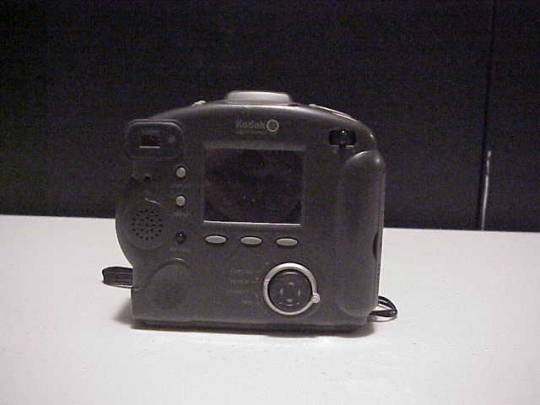
released in 1999, with a quality of exactly one megapixel the DC 220 is a weird little thing. it has custom software, connects to a computer via com ports with a transfer speed of ~11,000 bit/s. (roughly 30-60 seconds per photo in my experience) you can add custom text to your photos in the cameras built in software, and attach custom audio to each photo. it is a pain in the butt to get working, but it's quirks make it worth the frustration.
Olympus E-10



made in 2000 with a quality of a whopping four megapixels, the Olympus E-10 is the newest addition to my collection, and possibly the nicest camera I'll ever own. it's a fixed lens DSLR camera capable of 4x zoom, you can easily adjust the aperture and exposure on the fly, it's photos tend to be a whole 100kb in size (1/10th of a megabyte!) and to be entirely honest I have no idea how to use it. but I will eventually!
My Computer

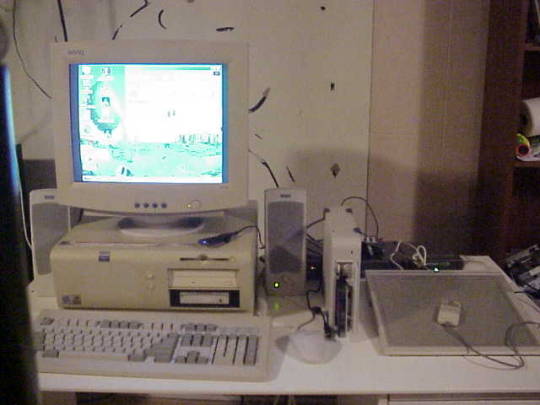

I try to use all era-appropriate tech to transfer photos and do any edits, this is the computer I do all that processing on! its a Dell Optiplex gx1- the daddy of pretty much any computer used in public schools (Chromebooks don't count) It's got a Pentium 3 CPU clocking at 500MHz, 512mb ram, running windows ME. it has all the original Kodak DC220 software installed, and I can't really access the Kodak's photos any other way. I've also got a few other weird bits attached to it -an HP sketch pro cad tablet and an external data cartridge SCSI device. both work, but I don't really bother to use them, they just look neat.
that's about it. have a good one! thanks for reading this all, if you did.
83 notes
·
View notes
Text
Rendering Walker Evans at Sea

Walker Evans, [RMS Queen Mary: Promenade Deck, Bow View, Port Side], circa 1958
In late 1957 or early 1958 Walker Evans traveled to London from New York by ship. Biographies of Evans don't count this as a significant trip, so details are scarce. There's a 1958 date book at the Met, but no scans are online. It's possible one direction he traveled on the RMS Queen Mary, the other direction took the SS Liberté.
At the time Evans was mainly doing editorial work, most notably for Fortune magazine, but in 1958 he began shooting features for Architectural Forum. In the April issue they published "London Look." The Met has a larger portfolio of photographs made for the feature.

Walker Evans, SS Liberté.
It's unclear if the study of ships was assigned ahead of the trip or if Evans made the photos during the voyage and pitched it after. (Evans had taken a trip on the Liberté as early as 1954, so it's possible some frames in the 1958 spread are from that previous trip.) The result was published in the October 1958 issue as a four page feature.
The Met has a portfolio of 54 photographs labelled Liberté, but this is incorrect, as it has photos from both ships. Getty has three photographs of the Queen Mary, in the form of work prints, with Evans writing the caption in pencil. Amon Carter has another. Perhaps a maritime expert could determine which frames in the batch of 54 labelled Liberté are actually Queen Mary.
Evans' main camera on this trip, both land and sea, seems to be the Rolleiflex, but a batch of 35mm frames show a dining room scene (the Met's jpegs are very tiny). The frames that show people out on deck without heavy coats make me question the "early" 1958 timeframe.

Perhaps the most interesting photographs Evans made in London are the portraits of Lucian Freud. One roll of film, twelve frames. Evans had become involved with Freud's ex-wife Caroline Blackwood and the encounter was awkward, at least on Evans' side. Freud described Evans as nervous, "a mixture of noble behavior and alcoholism."
Searching for more sources for the Queen Mary photos, I came across the work of Matteo Pagliarulo, a 3D artist who creates detailed renderings of ships. Using the Getty's aged sepia work print as the source, Pagliarulo created a rendering of, depending on how you look at it, either Evans' photo or the ship depicted in the photo.


Walker Evans work print / Matteo Pagliarulo's rendering
This Evans photo is a very deep cut in the ouvré, so I asked Matteo why he picked it:
At the time I was still in the initial phase of learning photorealism, I was starting to feel more confident with Blender (the 3D software) so I decided to try replicating a photograph to learn more. Frankly, I don’t exactly recall how I found this particular Walker Evans photo, considering my passion and interest in maritime history and ships/boats, it probably presented itself on social media feed and inspired me to create a 3D replica.
So the photo came across Pagliarulo's screen in a digital flotsam of vintage ship photos, unrelated to Walker Evans.

Matteo Pagliarulo's rendering of Evans' Queen Mary photograph
Pagliarulo has created a rendering of the ship to closely match the photo, but the photograph is specific, black and white, with the aspect ratio and lens characteristics of the Rolleifllex. Evans' composition using the square makes no effort to capture the size or grandeur of the ship.
The Evans is very minimal compared to your other work? Compared to more recent creations, this is indeed more minimalistic (or ‘minimalista’ in Italian). As I mentioned before, the reason I made it was so I could push my boundaries and learn new techniques in 3D and this photo was–and still is–perfect as the subject shown isn’t particularly complex. After the realization of this project I gave myself more challenges and ultimately I still come back to comparing my work to photographs as they’re the best witnesses of reality. One more recent example is the rendition of RMS Titanic’s propellers with a very similar angle of a famous photograph of RMS Olympic.


unknown photographer SS Olympic propellers 1924 / Pagliarulo's render of RMS Titanic’s propellers based on the Olympic photo (no photo was made of this angle of the Titanic)
Pagliarulo's rendering brings to mind Thomas Demand, who builds sculptural scenes out of paper and then photographs those scenes. Demand’s sources are often news photographs, so he’s going from news photos to paper model to his own photo of the paper model. Pagliarulo's rendering gives me a bit of the experience with the Evans, though Demand's source material is often brutally mundane compared to a photo like the Olympic propellers.

Proof Inc's rendering of source footage of the Pacific Sun cruise ship listing violently, which Demand used to create his paper models.
In 2011, while Scholar in Residence at the Getty Research Institute, Demand made Pacific Sun, a video work to recreate CCD footage of the inside of a cruise ship caught in a violent storm which Demand found on YouTube. He commissioned a 3D rendering of the video, mapping the objects' positions during the ship's dramatic list. He then recreated this in paper and animated it with 2400 stop-motion frames. So: ship's CCD video, Youtube edit, 3D model, paper model, finished 100 second video.
In Getty's 1995 Walker Evans publication Judith Keller suggested that the Evans ship photos were inspired by Charles Sheeler's 1929 painting "Upper Deck." Harvard museum has a ridiculously small jpeg of the painting, while the Met has a ridiculously small jpeg of the source photograph Sheeler used for the painting. And Getty has the photograph that Sheeler took to document the finished painting.

Charles Sheeler's photograph of his 1929 painting "Upper Deck," which itself was based on a photograph.
Just as some paintings are transmutations of photographs, Sheeler's photograph-turned-painting was made aboard the SS Majestic, formerly the German SS Bismarck, which became a British ship after World War I. Similarly, the SS Europa, a German ship, became the French SS Liberté after World War II.
Just a few years after Evans' 1958 trip, transatlantic air travel eclipsed ocean liners. The Liberté was scrapped in Italy in 1962. The Queen Mary lasted until 1967, before being permanently moored in Long Beach, California, as a tourist attraction and hotel. I see the ship most days in the distance from Ocean Blvd, but have never been on board. In our chat, I promised Matteo that when I finally go for a tour, I'd snap some photos from the port side of the promenade deck.
21 notes
·
View notes
Text
Your Code Is Hard To Read!
This is one of those posts I make not because I think my followers need to hear them, but because I want to link to them from Discord from time to time. If you are a Moderator, Contributor or "Helpfulie" on the PyGame Community Discord, I would welcome your feedback on this one!
"You posted your code and asked a question. We can't answer your question. Your code is hard to read."
Often when we tell people this, they complain that coding guidelines are just aesthetic preferences, and they didn't ask if their code followed coding guidelines. They asked us to fix the bug. That may be so, but the problem remains: If you ask us to fix your code, we can only help you if we can read it.
Furthermore, if there are many unrelated bugs, architectural problems, and hard to understand control flow, the concept of fixing an isolated bug becomes more and more unclear.
In order to fix unreadable code, you could:
eliminate global variables
replace magic numbers with constants
replace magic strings with enumerations
name classes, functions, constants, variables according to consistent coding standards
have functions that do one thing and one thing only like "collision detection" or "collision handling". If your function does two things at the same time, like rendering AND collision detection, then it must be refactored
rewrite deeply nested and indented code to be shallower
rewrite code that keeps a lot of state in local variables into special-case functions
use data structures that make sense
write comments that explain the program, not comments that explain the programming language
delete unneccessary/unreachable code from the question to make it easier to read or from your program to see if the problem persists
My own programs often violate one or more of those rules, especially when they are one-off throwaway scripts, or written during a game jam, or prototypes. I would never try to ask other people for help on my unreadable code. But I am an experienced programmer. I rarely ask for help in an unhelpful way. Almost never ask for help in a way that makes other experienced programmers ask for more code, or less code, or additional context. I post a minimal example, and I usually know what I am doing. If I don't know what I am doing, or if I need suggestions about solving my problem completely differently, I say so.
Beginner programmers are at a disadvantage here. They don't know what good code looks like, they don't know what good software architecture looks like, they don't know how to pare down a thousand lines of code to a minimal example, and if they try to guess which section of code contains the error, they usually guess wrong.
None of this matters. It may be terribly unfair that I know how to ask smart questions, and beginner programmers ask ill-posed questions or post code that is so bad it would be easier and quicker for an experienced programmer to re-write the whole thing. It is often not feasible to imagine what the author might have intended the code to work like and to fix the bugs one by one while keeping the structure intact. This is not a technical skill, this is a communicative and social skill that software engineers must pick up sooner or later: Writing code for other people to read.
If your code is too hard to read, people can't practically help you.
It gets worse. Unreadable code is sometimes unreadable because it is un-salvageable. It is hard to understand because there is nothing to understand, it would not work, and you need to go back to the drawing board.
Defensive Responses
This is not where the problem ends. Often, after a couple of rounds of back and forth, after questions like "Well, you say there is a bug, but can you tell me what you would want the code to do in the first place?", or "Is this a class or an instance? If it's supposed to be an instance variable, could you give it a lowercase name?" or "Could you give that variable _obj a more descriptive name? It looks like you are assigning different things to this variable in different parts of your loop. Perhaps you could use two variables with different, more descriptive names", you see a defensive response. The original question asker is not interested in making code easy to read, just in making it work. As I explained above, this is a confused way of thinking, because ill-posed questions and unreadable code make it difficult to impossible to make the code work, or to even understand what making it work would look like.
"Style is irrelevant." – This is by far the most common one. Since coding style, comments, variable names, and even re-factoring code into smaller functions do not affect the output, and thus not the correctness of the program.
"I asked for help with bugs, not style." – This is a variation on the first one. As long as there is no concrete and discrete bug, style feedback and questions for clarification can be discarded.
"This is too much work." – The original poster explains that making the code more readable is too much work for them, and fixing the bugs would be easier for others.
"Nobody will see the code anyway" – Nobody will see the code of the finished product, so it's irrelevant. Sometimes there are variations like "We aren't graded on code quality, only correctness" or "This is for a class project, nobody will depend on the code, so we don't need robustness."
"This is just throwaway code, it doesn't have to be good." – Like the previous one, this is frustrating to read because somebody posted the code on a forum for other people to read and asked them to understand it, and then said he doesn't care if it's readable or debuggable.
"I asked you for help." / "I am asking the questions here." – The original poster refuses to answer questions, because he asked, he expects answers, not questions in return.
"Don't blame me, I didn't write it" – We have completely left the realm of correctness and style now. The poster knows the code is unreadable, or doesn't make sense. He tried to protect his reputation. But he doesn't like the tone of the responses. Its not his fault the code doesn't make sense. It's not his fault if it doesn't work. Common variations are "This must be correct, it was the accepted answer on StackOverflow", or "I copied this from a tutorial", or "Don't blame me, this was written by GitHub Copilot". Often part of the problem is that the code has different parts written in different styles, or uses different data structures in different places, and both parts could benefit from a re-write to make them more consistent with each other. At other times the problem is that the code from the book is "correct" for certain purposes from the book, but not really suited for the problem at hand.
"I apologised already" – The poster is frustrated because he said "I am sorry I am a n00b" or "I am sorry for my bad English" already. Then somebody said his code is unreadable or his prose makes no sense. The poster sees readable code, or at least code that is readable enough to understand what the idea was, as a courtesy, as a social custom, not as something necessary to make the whole question and answer thing work. The same goes for a firm grasp of English. The poster apologised already that his English is bad, and you should just see past it. Dealing with this is especially difficult, because Q&A is framed as some kind of status game, and the poster is trying hard to save face already. Push-back will make him feel like he is losing face, and he will only get more defensive.
Causes
So where does the problem begin? Why do people write unreadable code, post it online, and get defensive? I think the answer is a combination of programming skill, social skill, and simplistic mental models.
Software Engineering is Difficult: Obviously, one root cause is that beginner programmers can't already write readable code from the start. Writing readable, well-factored code that is easy to debug, re-use, and adapt is something that comes with experience. Writing code for other people to read can only be learned after one has learned to write code.
Magical Thinking/Limited Cognitive Empathy: The most common and most direct cause of this phenomenon – the refusal to help others read your unreadable code – is not the unreadable code itself. It is the belief that it should be easy for experienced programmers to understand the structure of and intent behind a piece of code, even if the person who wrote it didn't. If you see software as basically magic, and don't see computers as soulless automatons that do what they do because they are built that way, then this is an easy trap to fall into.
A variant of this works for language. If somebody is bad at English, or bad at the technical jargon needed to ask his question, he will often think that the question he thought up in his native Klingon was perfectly well-formed, and that other people should have no trouble reading his words, because they also think in Klingon, so they would translate it into a question that makes sense anyway.
Status-Consciousness: Many beginner programmers feel the desperate need to distinguish themselves from other beginners, and if they have been learning JavaScript for two months now, they want to be seen as real programmers, not as children who play with Scratch and build Redstone contraptions in MineCraft. They want to be taken seriously. This reminds me of a five year old boy who stretches out his arm and tells me he is THIS BIG, and he is already FIVE, going on SIX, and he will go to SCHOOL soon.
Naive Mental Model of De-Bugging: Every program has a certain number of discrete features bugs, and when you remove all bugs, you end up with a program that works. This is of course nonsense. You can write a program that has an indeterminate number of bugs, or a program that implements an algorithm that doesn't quite work, or a useless program, or a program that does random nonsense.
With any luck, sooner or later, programmers will learn the technical side, and the social and collaborative side of software development.
75 notes
·
View notes
Text
Blend Tradition with Modernity in Your 3D Projects!
Introducing our Modern Japanese-style Rural Courtyard Landscape Model, a perfect fusion of traditional Japanese aesthetics and contemporary design. This model is ideal for creating serene, culturally rich environments that captivate and inspire.

Key Features:
Harmonious Design: Combines traditional Japanese elements like Zen gardens, wooden structures, and water features with modern landscaping touches.
Versatile Use: Perfect for architectural visualizations, game environments, animations, and cinematic projects.
Universal Compatibility: Fully compatible with Blender, Cinema4D, Maya, 3ds Max, and other major 3D software.
Rendering-Ready: Optimized for high-quality 3D rendering, ensuring stunning visual results.

Ideal For:
Architects & Designers: Showcase unique blends of traditional and modern Japanese design in your projects.
Game Developers: Build immersive, culturally rich environments for exploration or storytelling.
Animators & Filmmakers: Create serene, nature-inspired scenes for cinematic storytelling.

Download the Modern Japanese-style Rural Courtyard Landscape Model today and bring a touch of timeless elegance and modern sophistication to your 3D creations!
10 notes
·
View notes
Text
Enhancing Client Engagement with Immersive 3D Walkthroughs in Architecture

Explore how immersive 3D walkthroughs transform client engagement in the architectural process. These interactive platforms allow clients to actively explore designs, enabling architects to gather valuable feedback. This collaboration ensures that the final outcome meets client expectations, ultimately enhancing satisfaction and fostering stronger relationships.
#3D architectural walkthroughs#benefits of 3D walkthroughs#architecture visualization techniques#immersive design experiences#architectural rendering software#virtual reality in architecture#interactive design presentations#client engagement in architecture#architectural design tools#3D visualization for real estate
1 note
·
View note
Note
mobile browsers can still run javascript. and if you can run javascript you can literally redesign the entire front end. what do you think is happening with things like custom forum structure, popup/inline member profiles, and custom member lists? don't blame the software because your scriptkiddie ass only knows how to pick hexadecimal colors from a gradient and look up CSS on w3c. // When you want your site to take fifty years to load //
maybe on a nokia or blackberry from 2006, it does. if you have any smartphone from the last decade, js is actually super light, unless your code is horrendously optimized and querying way more than it should be, which is a skill issue. you can also tell the browser to cache your javascript so it only needs to load once, and voila, your site is slow, at most, one (1) time.
you don't even need to jscript the entire mobile layout either. you can create a mobile-friendly layout just with css variables to render a mobile-compatible version of the skin on the desktop version when the viewport is sufficiently small.
there's honestly so many ways to make a responsive, mobile-friendly skin on jcink that anyone who says it's "impossible" is just telling on themselves. the fact that we have alleged jcink "coders" claiming it can't be done just shows the effect of what happens when everyone gatekeeps codes, tells on people for "being inspired" by vague aesthetics, and turns around to try and make a quick buck whenever they so much as produce something moderately presentable (no matter how fucked up the back-end is). and worse, any hint of criticism of them is labeled as bullying or dogpiling, and coders are zealously defended by random stans even when the source code is a sloppy pile of spaghetti.
seriously, if anyone thinks that making front-ends compatible with small viewports is nonviable, when there's a billion tips and tutorials online, i would hate to see what you guys think about SEO, which actually is a maze of jealously guarded secrets and a bunch of placebo-coded technowitchcraft and is genuinely hindered by jcink's 20-year-old forum architecture.
.
6 notes
·
View notes
Text
Spotlight on Rising 3D Rendering Architects and the Best in Toronto
Canada is home to some of the most innovative and talented architects in the world, blending artistry, functionality, and sustainability into every project. From skyscrapers in Toronto to breathtaking residential designs, architectural firms in Canada are shaping skylines and redefining living spaces.

In this blog, we explore the top architecture firms and services in Canada, with a special focus on Rising 3D Rendering Architects, a standout name known for their cutting-edge design and visualization services.
Why Canada Stands Out in Architectural Design
Canada’s architectural landscape is diverse and vibrant, featuring firms that excel in various niches such as:
Sustainable and eco-friendly designs
Modern and minimalistic residential projects
Commercial and urban planning
Restoration of historical landmarks
Whether you're looking for high-end luxury homes, commercial spaces, or intricate 3D renderings, Canadian architects bring unparalleled expertise and creativity to the table.
Top 10 Architecture Firms in Canada
Here’s a list of some of the most prominent architecture firms making waves in Canada:
Diamond Schmitt Architects – Renowned for blending innovation with sustainability.
Zeidler Architecture – Known for iconic cultural and commercial spaces.
Moriyama & Teshima Architects – Experts in crafting large-scale civic projects.
B+H Architects – Leaders in creating smart, innovative urban designs.
Perkins+Will – Focused on sustainable, future-forward projects.
Superkül – Specialists in minimalistic residential designs.
HOK Canada – Delivering extraordinary healthcare and workplace designs.
HCMA Architecture + Design – Known for their community-centered projects.
MacKay-Lyons Sweetapple Architects – Experts in coastal and rural architecture.
Rising 3D Rendering Architects – Pioneers in 3D architectural visualization, transforming ideas into vivid reality.
Spotlight on Rising 3D Rendering Architects
Rising 3D Rendering Architects have carved a niche in architectural visualization, offering services that bring blueprints to life. Here’s what sets them apart:
Photorealistic Visualizations: They create stunning, lifelike 3D renders that allow clients to visualize projects with unmatched clarity.
Collaborative Approach: Working closely with architects, designers, and clients, they ensure the design aligns perfectly with the vision.
Innovative Technology: By leveraging cutting-edge tools and software, they deliver exceptional accuracy and detail.
Wide Range of Services: From exterior renderings of skyscrapers to intricate interior layouts, they excel across various design types.
Their services have become indispensable for architects and developers seeking to present their projects compellingly and convincingly.
Toronto: A Hub for Small and Large Architecture Firms
Toronto is home to a mix of large, globally recognized firms and smaller boutique studios offering bespoke services. If you're looking for creative solutions tailored to your needs, here are some noteworthy small architecture firms in Toronto:
Superkül – Masters of minimalism and thoughtful design.
Plant Architect Inc. – Experts in blending architecture and landscape design.
GH3 Architects – Specializing in modern, sustainable designs.
These firms, along with Rising 3D Rendering Architects, contribute to Toronto’s reputation as a global design hub.
Why Choose Canadian Architects?
Whether you're an individual homeowner or a large-scale developer, Canadian architecture firms provide:
Global Expertise: Many firms bring international experience and innovation to their designs.
Sustainability Focus: Eco-friendly designs are at the forefront of Canadian architecture.
Tailored Solutions: From urban spaces to intimate homes, there’s a solution for every need.
Conclusion
Canada's architectural landscape is a blend of creativity, functionality, and innovation. Firms like Rising 3D Rendering Architects are not just shaping buildings but also enhancing how we envision spaces through advanced visualization techniques.
If you're planning a project or simply looking for inspiration, Canada’s architecture scene offers something for everyone. Explore these exceptional firms, connect with experts, and turn your dream projects into reality.
#animation#3d animation services#interiordesign#3d animation studio#walkthrough animation#3d walkthrough#walkthrough#architectural#rendering#exterior design
2 notes
·
View notes
Text
Sega Saturn - DOOM
Title: DOOM / ドゥーム
Developer: id Software / Williams Entertainment Inc. (Midway Home Entertainment) / Rage Software
Publisher: Soft Bank
Release date: 11 July 1997
Catalogue No.: T-18610G
Genre: Compilation / First Person Shooter


Ooh, Saturn Doom. A game that had every Saturn owner dropping their head in shame. Even the 32X version is better than this Saturn version thanks to bloody Rage and their piss-poor programming but wait! I'll have to explain how it turned out the way it did in the end. There is also a 3DO version of Doom as well, but that one is even worse, and has a development story for the ages! Anyway, back to Saturn Doom.
Saturn Doom in NTSC doesn't seem as bad as the PAL version but it's still windowed and quite slow with a poor frame rate. However, it does include both 'The Ultimate Doom' and 'Doom 2: Hell on Earth'. Not that that's going to save it though. There's quite a funny and very sneaky quote on the cover from the creator of Doom that says, “THE BEST DOOM EVER” Of course we all know he wasn't talking about this version. I wonder if that's legal.
Why does it sound like I'm taking damage when I walk down the steps? What really hurts the game however is the lousy frame rate. After a few levels the slow, jerky visuals can give you a massive headache. And when the frame rate slows, the controls become sluggish and inexact. Even opening a door looks choppy.
Anyway, the bottom line is that Saturn Doom is crap. Get the far superior Quake, Exhumed, or even Hexen. All of those run as smooth as anything. Quake is especially impressive!! Easily the best home console version bar the Dreamcast home brew port.
There is a reason for this, though. Saturn programmer Jim Bagley originally wrote an engine more suited to the Sega Saturn, allowing VDP1 to handle the textured walls, floors, and ceilings. John Carmack reportedly vetoed the idea on behalf of id Software, as he did not like the affine texture warping inherent with 3D renderers that do not support texture perspective correction (like the VDP1). This means that wall rendering is done column by column by VDP1. Floor and ceiling rendering is handled by the dual SH-2 CPUs and transferred to VDP1 to be drawn line by line, sector by sector. Only the HUD and background sky texture are updated separately by VDP2.
To make matters worse, support for the Taisen Cable was stripped from the North American release despite the back of the US box claiming the game is "deathmatch-ready with two-player link capabilities".
There is an internet urban legend that the Japanese Sega Saturn version of Doom which was published by Soft Bank has better performance. I own the American and Japanese versions of it. The JP version still runs pretty bad - dropping frames in busier areas is the same as the US and PAL editions. The final result was one part of the struggles developers faced when trying to exert the most potential out of the complicated architecture that powered the Sega Saturn.

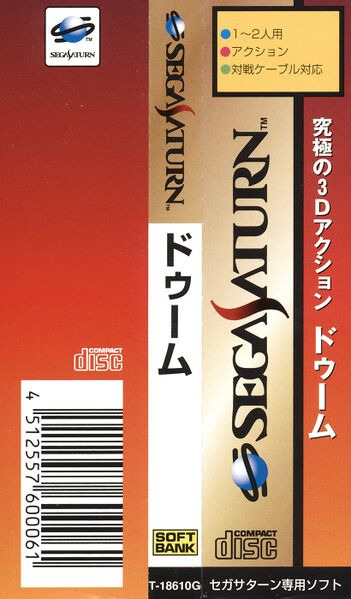
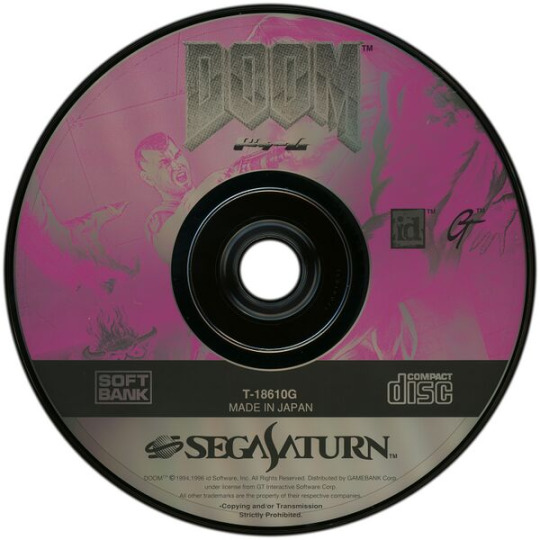
youtube
4 notes
·
View notes
Text


Today I bought Bryce 7, which is a really old 3D rendering software! It’s what was used for dnb covers for aaaages, and has that sort of old aesthetic (the UI is so fucking god awfully old wow)
So, throw me some ideas! I want to test what this thing can make, even though it takes absolutely forever to render anything good.
From what I’ve tested, it can make landscapes, architecture, possibly people, I can import 2d images and heightmaps as well.
24 notes
·
View notes
Text
Revit Architecture Online Training - cubikcadd

Revit Architecture Online Training - cubikcadd
In today’s fast-paced design and architecture world, staying ahead of the curve requires mastering the right tools. One of the most powerful and widely used software platforms for architects, engineers, and construction professionals is Autodesk Revit. If you’re serious about elevating your skills and advancing your career, enrolling in a Revit course can be a game-changer. This blog will explore the benefits of taking a Revit course, what you can expect to learn, and why it's essential for anyone in the design industry.
What Is Revit?
Revit is a Building Information Modeling (BIM) software developed by Autodesk that allows architects, engineers, and construction professionals to design, visualize, and manage building projects in a 3D environment. Unlike traditional CAD software, Revit is more than just a drawing tool. It enables users to create intelligent models with real-world information about materials, structures, and systems, providing a holistic approach to design and construction.
Why Take a Revit Course?
A Revit course is crucial for professionals who want to maximize their productivity and accuracy in design. Here are a few key reasons why learning Revit is a smart investment in your future:
1. Industry Standard
Revit is an industry-standard BIM software widely used in architectural firms, engineering companies, and construction projects worldwide. Employers often seek professionals proficient in Revit, making it a valuable skill on your resume.
2. Improve Design Efficiency
Revit allows you to work smarter, not harder. By learning how to use the software’s advanced features, such as parametric modeling and automatic updates across the project, you can significantly reduce the time spent on revisions and manual updates.
3. Enhance Collaboration
Revit supports team collaboration with ease. A Revit course will teach you how to work with cloud-based models, enabling multiple users to access, modify, and update a single project file in real-time. This is especially important in large projects where coordination between different disciplines (architecture, structural engineering, MEP) is crucial.
4. Create Detailed 3D Visualizations
One of the standout features of Revit is its ability to generate highly detailed 3D models and visualizations. By enrolling in a Revit course, you’ll learn how to create photorealistic renders, walkthroughs, and simulations, helping you and your clients better understand the design before construction even begins.
5. Better Project Management
Revit’s intelligent data system ensures that every part of your model is interconnected. This allows for accurate cost estimates, material takeoffs, and construction timelines. A Revit course will show you how to use these tools to improve project management, ensuring projects stay on time and within budget.
What Will You Learn in a Revit Course?
From basic to advanced, a well-designed Revit course usually covers a wide range of topics. The following summarises what you can anticipate learning:
1. Introduction to BIM and Revit Interface
You’ll start by getting familiar with BIM concepts and the Revit interface. This includes learning about tools, menus, and how to navigate the software efficiently.
2. Modeling Techniques
The course will teach you how to create accurate architectural models, including walls, floors, roofs, doors, and windows. You’ll also learn how to model structural components and MEP systems, depending on the course's focus.
3. Documentation and Annotations
Learn how to generate construction documentation, such as floor plans, sections, elevations, and details. You’ll also cover how to annotate your drawings with dimensions, text, and other symbols necessary for clear communication with contractors and clients.
4. Advanced Modeling and Customization
Once you master the basics, you’ll dive into more advanced topics such as custom family creation, curtain wall systems, complex roofs, and parametric design, which allows you to create flexible models.
ph : +91-9500024134
Visit our website: https://www.cubikcadd.in/revit-training-in-coimbatore.html
Ramnagar Branch, Coimbatore : https://maps.app.goo.gl/boAyupUoqtda9fXU6
Saravanampatti Branch, Coimbatore : https://maps.app.goo.gl/xrtknmSk76d8cnQV9
OMR Branch, Chennai : https://maps.app.goo.gl/HCpHhcFHGdKsPCPx7
Facebook: https://www.facebook.com/cubikcadd
Instagram: https://www.instagram.com/cubikcadd/
Tiwtter: https://x.com/CubikCadd
2 notes
·
View notes
Text
#Playstation7 #framework #BasicArchitecture #RawCode #RawScript #Opensource #DigitalConsole
To build a new gaming console’s digital framework from the ground up, you would need to integrate several programming languages and technologies to manage different aspects of the system. Below is an outline of the code and language choices required for various parts of the framework, focusing on languages like C++, Python, JavaScript, CSS, MySQL, and Perl for different functionalities.
1. System Architecture Design (Low-level)
• Language: C/C++, Assembly
• Purpose: To program the low-level system components such as CPU, GPU, and memory management.
• Example Code (C++) – Low-Level Hardware Interaction:
#include <iostream>
int main() {
// Initialize hardware (simplified example)
std::cout << "Initializing CPU...\n";
// Set up memory management
std::cout << "Allocating memory for GPU...\n";
// Example: Allocating memory for gaming graphics
int* graphicsMemory = new int[1024]; // Allocate 1KB for demo purposes
std::cout << "Memory allocated for GPU graphics rendering.\n";
// Simulate starting the game engine
std::cout << "Starting game engine...\n";
delete[] graphicsMemory; // Clean up
return 0;
}
2. Operating System Development
• Languages: C, C++, Python (for utilities)
• Purpose: Developing the kernel and OS for hardware abstraction and user-space processes.
• Kernel Code Example (C) – Implementing a simple syscall:
#include <stdio.h>
#include <unistd.h>
int main() {
// Example of invoking a custom system call
syscall(0); // System call 0 - usually reserved for read in UNIX-like systems
printf("System call executed\n");
return 0;
}
3. Software Development Kit (SDK)
• Languages: C++, Python (for tooling), Vulkan or DirectX (for graphics APIs)
• Purpose: Provide libraries and tools for developers to create games.
• Example SDK Code (Vulkan API with C++):
#include <vulkan/vulkan.h>
VkInstance instance;
void initVulkan() {
VkApplicationInfo appInfo = {};
appInfo.sType = VK_STRUCTURE_TYPE_APPLICATION_INFO;
appInfo.pApplicationName = "GameApp";
appInfo.applicationVersion = VK_MAKE_VERSION(1, 0, 0);
appInfo.pEngineName = "GameEngine";
appInfo.engineVersion = VK_MAKE_VERSION(1, 0, 0);
appInfo.apiVersion = VK_API_VERSION_1_0;
VkInstanceCreateInfo createInfo = {};
createInfo.sType = VK_STRUCTURE_TYPE_INSTANCE_CREATE_INFO;
createInfo.pApplicationInfo = &appInfo;
vkCreateInstance(&createInfo, nullptr, &instance);
std::cout << "Vulkan SDK Initialized\n";
}
4. User Interface (UI) Development
• Languages: JavaScript, HTML, CSS (for UI), Python (backend)
• Purpose: Front-end interface design for the user experience and dashboard.
• Example UI Code (HTML/CSS/JavaScript):
<!DOCTYPE html>
<html>
<head>
<title>Console Dashboard</title>
<style>
body { font-family: Arial, sans-serif; background-color: #282c34; color: white; }
.menu { display: flex; justify-content: center; margin-top: 50px; }
.menu button { padding: 15px 30px; margin: 10px; background-color: #61dafb; border: none; cursor: pointer; }
</style>
</head>
<body>
<div class="menu">
<button onclick="startGame()">Start Game</button>
<button onclick="openStore()">Store</button>
</div>
<script>
function startGame() {
alert("Starting Game...");
}
function openStore() {
alert("Opening Store...");
}
</script>
</body>
</html>
5. Digital Store Integration
• Languages: Python (backend), MySQL (database), JavaScript (frontend)
• Purpose: A backend system for purchasing and managing digital game licenses.
• Example Backend Code (Python with MySQL):
import mysql.connector
def connect_db():
db = mysql.connector.connect(
host="localhost",
user="admin",
password="password",
database="game_store"
)
return db
def fetch_games():
db = connect_db()
cursor = db.cursor()
cursor.execute("SELECT * FROM games")
games = cursor.fetchall()
for game in games:
print(f"Game ID: {game[0]}, Name: {game[1]}, Price: {game[2]}")
db.close()
fetch_games()
6. Security Framework Implementation
• Languages: C++, Python, Perl (for system scripts)
• Purpose: Ensure data integrity, authentication, and encryption.
• Example Code (Python – Encrypting User Data):
from cryptography.fernet import Fernet
# Generate a key for encryption
key = Fernet.generate_key()
cipher_suite = Fernet(key)
# Encrypt sensitive user information (e.g., account password)
password = b"SuperSecretPassword"
encrypted_password = cipher_suite.encrypt(password)
print(f"Encrypted Password: {encrypted_password}")
# Decrypting the password
decrypted_password = cipher_suite.decrypt(encrypted_password)
print(f"Decrypted Password: {decrypted_password}")
7. Testing and Quality Assurance
• Languages: Python (for automated tests), Jest (for JavaScript testing)
• Purpose: Unit testing, integration testing, and debugging.
• Example Unit Test (Python using unittest):
import unittest
def add(a, b):
return a + b
class TestGameFramework(unittest.TestCase):
def test_add(self):
self.assertEqual(add(10, 20), 30)
if __name__ == '__main__':
unittest.main()
8. Order of Implementation
• Phase 1: Focus on core system architecture (low-level C/C++) and OS development.
• Phase 2: Develop SDK and start building the basic framework for UI and input management.
• Phase 3: Work on backend systems like the digital store and integrate with front-end UI.
• Phase 4: Begin rigorous testing and debugging using automated test suites.
This comprehensive approach gives you a detailed idea of how each component can be built using a combination of these languages and technologies. Each section is modular, allowing teams to work on different aspects of the console simultaneously.
[Pixel Art/Sprites/Buildinodels/VictoriaSecretPixelArtKit #Playstation7 #DearDearestBrands]
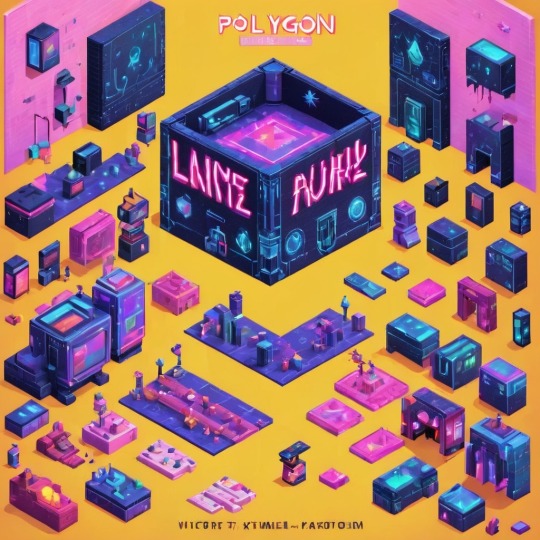
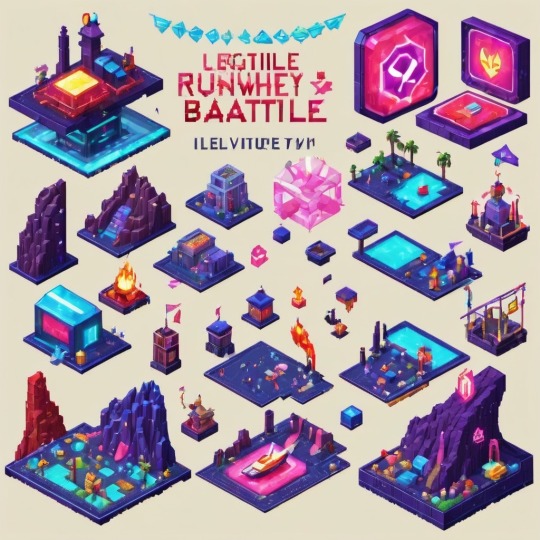
#victoriasecretrunway#runwaybattle#victoria secret fashion#victoria secert model#victoriasecret#victoria secret#VictoriaSecretRunwayBattle#capcom victoriasecret#capcom videogames#playstation7#ps7#deardearestbrands#capcom#digitalconsole#python#script#rawscript#raw code#framework#VictoriaSecretVideoGame#deardearestbrandswordpress
2 notes
·
View notes
Text

Top, Gold oval brooch with a band of diamonds within a blue glass guilloche border surrounded by white enamel (1890). Lady’s blue right eye with dark brow (from Lover’s Eyes: Eye Miniatures from the Skier Collection and courtesy of D Giles, Limited) Via. Bottom, screen capture of The ceremonial South Pole on Google Street View part of a suite of Antarctica sites Google released in 360-degree panoramics on Street View on July 12, 2017. Taken by me on July 29, 2024. Via.
--
Images are mediations between the world and human beings. Human beings 'ex-ist', i.e. the world is not immediately accessible to them and therefore images are needed to make it comprehensible. However, as soon as this happens, images come between the world and human beings. They are supposed to be maps but they turn into screens: Instead of representing the world, they obscure it until human beings' lives finally become a function of the images they create. Human beings cease to decode the images and instead project them, still encoded, into the world 'out there', which meanwhile itself becomes like an image - a context of scenes, of states of things. This reversal of the function of the image can be called 'idolatry'; we can observe the process at work in the present day: The technical images currently all around us are in the process of magically restructuring our 'reality' and turning it into a 'global image scenario'. Essentially this is a question of 'amnesia'. Human beings forget they created the images in order to orientate themselves in the world. Since they are no longer able to decode them, their lives become a function of their own images: Imagination has turned into hallucination.
Vilém Flusser, from Towards a Philosophy of Photography, 1984. Translated by Anthony Mathews.
--
But. Actually what all of these people are doing, now, is using a computer. You could call the New Aesthetic the ‘Apple Mac’ Aesthetic, as that’s the computer of choice for most of these acts of creation. Images are made in Photoshop and Illustrator. Video is edited in Final Cut Pro. Buildings are rendered in Autodesk. Books are written in Scrivener. And so on. To paraphrase McLuhan “the hardware / software is the message” because while you can imitate as many different styles as you like in your digital arena of choice, ultimately they all end up interrelated by the architecture of the technology itself.
Damien Walter, from The New Aesthetic and I, posted on April 2, 2012. Via.
3 notes
·
View notes
Text
From 2D to BIM: Upgrading Your Architectural Design Process
Are you still stuck in the 2D era?
Upgrade your architectural design process to the cutting-edge technology of Building Information Modelling (BIM). This game-changing innovation is transforming the architecture industry, and it's time to join the revolution.
The Limitations of 2D Design
Traditional 2D architectural design has served us well, but it's time to acknowledge its constraints. 2D designs lack the depth and detail required for modern construction projects. if it's fail to provide a comprehensive understanding of the building's components, leading to errors, miscommunications, and costly rework.
Lack of Clarity: 2D designs can be ambiguous, leading to misunderstandings and misinterpretations.
Inadequate Visualization: 2D designs struggle to convey complex spatial relationships and design intent.
Inefficient Collaboration: 2D designs make it challenging for stakeholders to collaborate and communicate effectively.
Error-Prone: 2D designs are more susceptible to human error, leading to costly rework and delays.
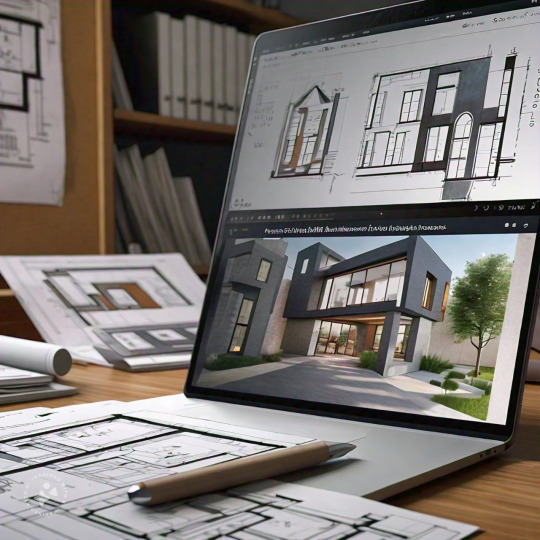
Enter BIM: The Future of Architectural Design
BIM is more than just a design tool – it's a collaborative platform that unifies architecture, engineering, and construction professionals. With BIM, you can create detailed, data-rich models that simulate real-world performance. This revolutionary technology enables:
Improved Collaboration: Stakeholders can access and contribute to the design process in real-time, ensuring everyone is on the same page.
Enhanced Visualization: 3D models and simulations facilitate better understanding and communication, reducing errors and miscommunications.
Increased Accuracy: Automated clash detection and interference checking minimize errors, ensuring a more efficient design process.
Efficient Project Management: Real-time tracking and analysis streamline the construction process, reducing delays and cost overruns.
Seamless Transition with Architectural BIM Services
Upgrading to BIM doesn't mean starting from scratch. Our expert Architectural BIM Services will guide you through a seamless transition, leveraging your existing designs to create rich, data-driven models. Our comprehensive services include:
Architectural BIM Modeling: Transforming 2D designs into detailed, interactive 3D models, enabling enhanced visualization and collaboration.
Architecture CAD Drawing: Converting traditional CAD files into BIM-compatible formats, ensuring a smooth transition.
Architectural 3D Modeling Services: Creating immersive, photorealistic visualizations, enhancing design communication and stakeholder engagement.
Architectural 3D Rendering Services: Generating stunning, high-resolution images and animations, perfect for marketing and presentation purposes.
Benefits of BIM
Enhanced Creativity: Explore new design possibilities with data-driven models, unlocking innovative solutions.
Improved Productivity: Streamline your workflow with automated processes, reducing design time and costs.
Increased Competitiveness: Stand out with cutting-edge technology and innovative solutions, attracting clients and projects.
Better Decision-Making: Data-driven models enable informed decisions, reducing risks and improving project outcomes.
Sustainability: BIM facilitates sustainable design, reducing environmental impact and promoting green building practices.
Implementing BIM in Your Practice
Upgrading to BIM requires a strategic approach. Here's a step-by-step guide to ensure a smooth transition:
Assess Your Current Workflow: Identify areas for improvement and determine the best approach for your practice.
Choose the Right BIM Software: Select a software that aligns with your needs and skill level.
Train Your Team: Invest in comprehensive training to ensure a seamless transition.
Develop a BIM Execution Plan: Establish clear goals, processes, and standards for your BIM implementation.
Start Small: Begin with a pilot project to test and refine your BIM workflow.
The architectural design process is evolving, and BIM is leading the charge. Don't let outdated design processes hold you back. Embrace the future of architecture with our expert BIM services. Discover the advantages of enhanced creativity, improved productivity, and increased competitiveness. Join the BIM revolution today and transform your architectural design process. Contact us to learn more about our Architecture BIM Services and take the first step towards a more efficient, collaborative, and innovative future.
#architecture#interiors#bim#construction#autocad#architectdesign#architecturalbimservices#modern architecture
2 notes
·
View notes